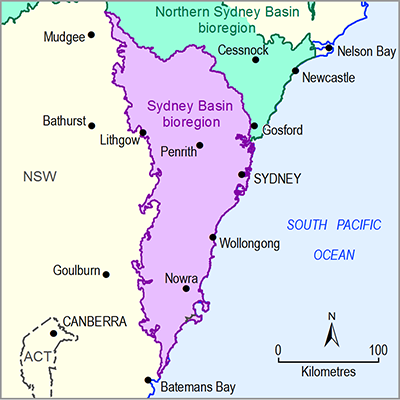The Sydney region supports a population of more than 4.7 million. Ensuring that the supply of water to that population is of a quality sufficient for human consumption means that water quality is of major interest to WaterNSW (formerly Sydney Catchment Authority and State Water Corporation), the organisation responsible for managing water supply across this region. Water quality monitoring is undertaken by WaterNSW across a range of water quality parameters (see Section 1.1.5 of companion product 1.1 for the Sydney Basin bioregion (Herron et al., 2018)) to ensure that levels are within acceptable guidelines for human consumption and to trigger timely responses when levels are found to exceed the guidelines.
In addition to WaterNSW, other organisations that collect water quality data in the Sydney region are Sydney Water Corporation, DPI Water (formerly the NSW Office of Water) and NSW Office of Environment and Heritage (OEH). The Bureau of Meteorology is in the process of building a national water information system. Water quality is one of the categories of data that it is mandated to collect. The Bureau has surveyed organisations named under the Commonwealth’s Water Act 2007 in the Water Regulations 2008 as to what data are held and collected. Some of these data have been supplied to the Bureau of Meteorology. Details of these water quality data are summarised in Table 5. A number of organisations within the bioregion, surveyed by the Bureau of Meteorology as part of their water data acquisition mandate, indicated they had no water quality data (Wingecarribee, Shoalhaven, Goulburn-Mulwaree local councils; Greater Sydney local land services regions).
Other water quality data are collected by mining companies as part of their environmental assessments and on-going monitoring requirements. The NSW major project assessments website (NSW Planning and Environment, 2016) is a centralised repository for accessing these reports, but they can generally be found on the mining company websites also.
Tertiary institutions will also have water quality data, much of it reported in academic theses and peer-reviewed publications.
Water quality data are often collected for very localised studies, involving variable sampling methods, sampling frequencies and lengths of record. The use of short-term, localised water quality data to provide an overview of water quality across a large region needs to be undertaken with a good understanding of representativeness of the data across the region of interest and through time, in particular having regard to the sources of water quality constituents and the mechanisms for mobilising them.
Table 5 Water quality data currently or historically collected by NSW organisations
EC = electrical conductivity; TN = total nitrogen; TP = total phosphorus; TSS = total suspended solids

